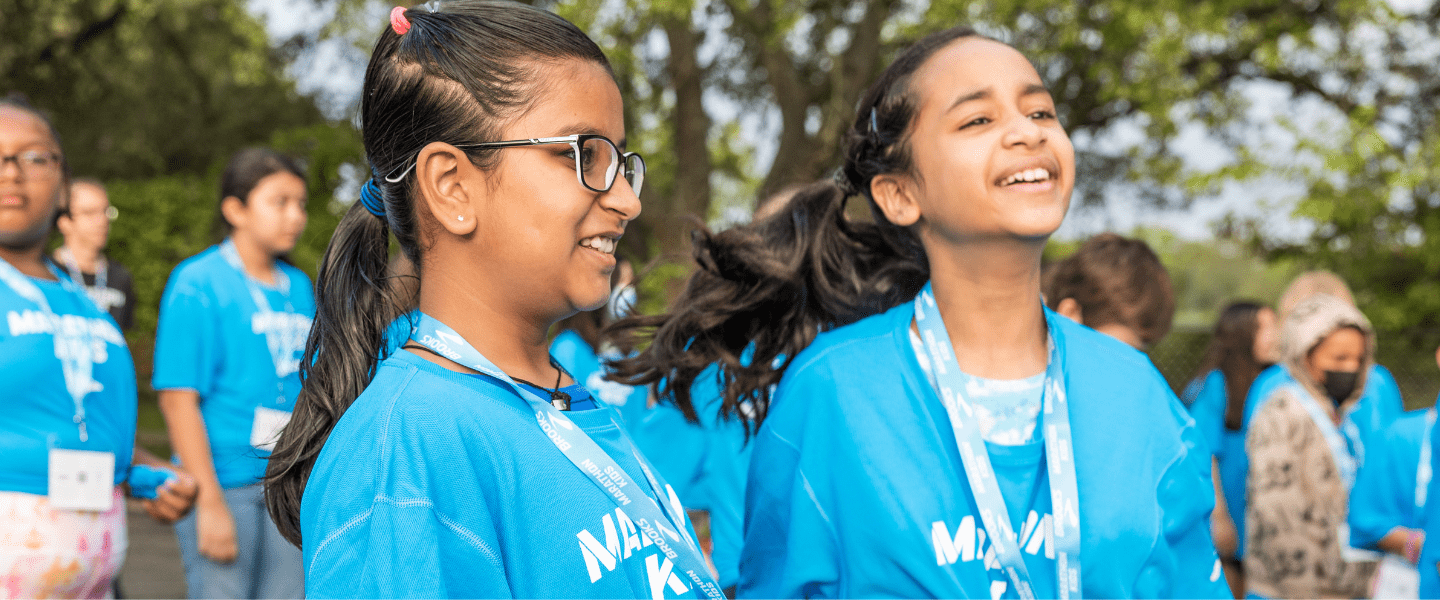
5 Best Indoor PE Games for Middle School Students
Managing stress, anxiety and mood swings is important for anyone—but it’s crucial for middle school students. These are the years when kids’ lives change significantly in so many ways: They’re entering puberty, and their social landscapes are shifting. Responsibilities at home are mounting, while school is getting harder and team sports more demanding.
This is why movement and play are still so important for middle-school students. Tweens and brand-new teenagers are still kids, after all! They need a fun outlet for their abundant energy. Regular, vigorous physical activity is also one of the proven best ways to regulate emotions, build confidence and succeed in academics.
With that in mind, Marathon Kids has compiled 5 of the best indoor PE games for middle-school students. These are great options for getting your middle-school students moving when it’s too wet, hot or freezing out to head outdoors. Don’t forget, Marathon Kids counts 20 minutes of heart-pounding exercise as equivalent to one mile! And every sweaty activity session helps kids build their endurance and PE skills while boosting their moods and confidence levels.
1. Fitness Bingo
What You’ll Need:
- Bingo-style sheets with exercises in each square (e.g., 10 pushups, 20 seconds of jumping jacks).
- Markers or pens for each students or one for each team.
Setup:
- Create Bingo sheets with a variety of exercises and repetitions or times.
- Distribute one sheet and a marker to each student or small teams of students.
How to Play:
- The teacher calls out exercises randomly.
- Students/Teams complete the exercise and mark it off on their sheets.
- The first student/team to complete a row, column, or diagonal and call out “Fitness Bingo!” wins.
Next Round:
- The winner becomes the leader and calls out exercises for the next game.
This activity is perfect for middle-schoolers, combining fun competition with self-directed movement!
2. Hula Hoop Tic Tac Toe
What You’ll Need:
- 9 hula hoops
- 10 beanbags (5 of one color, 5 of another)
Setup:
- Arrange the hula hoops on the floor in a 3x3 grid, like a tic-tac-toe board.
- Divide students into several teams; then pair groups of two teams to play one another.
- Have each team line up at a starting point some distance away from the hoops.
Objective:
- The goal is the same as traditional tic-tac-toe:
- Teams try to create a line of three hoops filled with their beanbags.
- Players must block the opposing team from completing their line by strategically placing their own beanbags.
How to Play:
- The teacher signals the start by saying "Go!"
- Player One from Team 1:
- Runs to the hoops. Drops a beanbag into a hoop of their choice. Runs back to the end of their team’s line.
- As soon as Player One returns, Player One from Team 2 repeats the same steps.
Additional Tips:
- Games move quickly, so teams will likely complete several rounds before all players have their turn.
- To keep waiting players active, call out movements and change of up activites every 30 seconds:
- Jumping jacks, Squats, Marching or running in place
This fast-paced game keeps everyone moving while encouraging teamwork and strategy!
3. Shark Zone
What You’ll Need:
- Mats or another similiar item.
- Stable items for students to stand on (e.g., balance beams, benches, chairs, domes, polyspots).
Setup:
- Spread mats throughout the gym to represent "shark-infested waters."
- Place stable items on top of the mats to serve as "safe zones."
How to Play:
- Divide students into teams.
- Teams must work together to move from one safe zone to the next without stepping on the mats.
- If anyone touches the mat, the team must restart.
Benefits:
This game encourages teamwork, balance, and coordination while delivering plenty of laughter and fun on an indoor PE day!
4. Cat and Mouse
What You’ll Need:
- Item to serve as tails.
Setup:
- Give each student a "tail" to tuck into their waistband.
- Select students to be the "cats" who will chase the "mice." The number of taggers will vary on class size.
How to Play:
- Cats chase the mice, trying to pull out their tails.
- When a mouse loses their tail, they:
- Take a lap around the gym to reenter the game, OR
- Complete an exercise from the movement station before returning to play.
Benefits:
This exciting game keeps everyone moving, while fostering agility, quick thinking, and plenty of fun!
5. Everyone Moves
What You’ll Need:
- Create an indoor track area on the perimeter and use the middle of the space for the activity area.
Setup:
- Designate a route around the gym.
- Divide the class into two groups. Or create teams for relay variations.
- Choose activity for "inside" the track area.
How to Play:
While 1/2 the class is completing laps around the perimeter, the other half is practicing a skill, playing a tag game, completing an aseeessment inside the "track" area.
Optional Fun:
Students can track their distances with Marahton Kids free digital platform to set and celebrate personal milestones.
Benefits:
This straightforward activity promotes endurance, teamwork, and goal-setting while offering flexible indoor options for movement and allows for all kids to be active to increase MVPA minutes.
Looking for more indoor PE games for middle school students?
Create your free Marathon Kids account to gain access to our resource library full of unique games, activities, and lesson plans!
Make Marathon Kids Your School's Running Partner